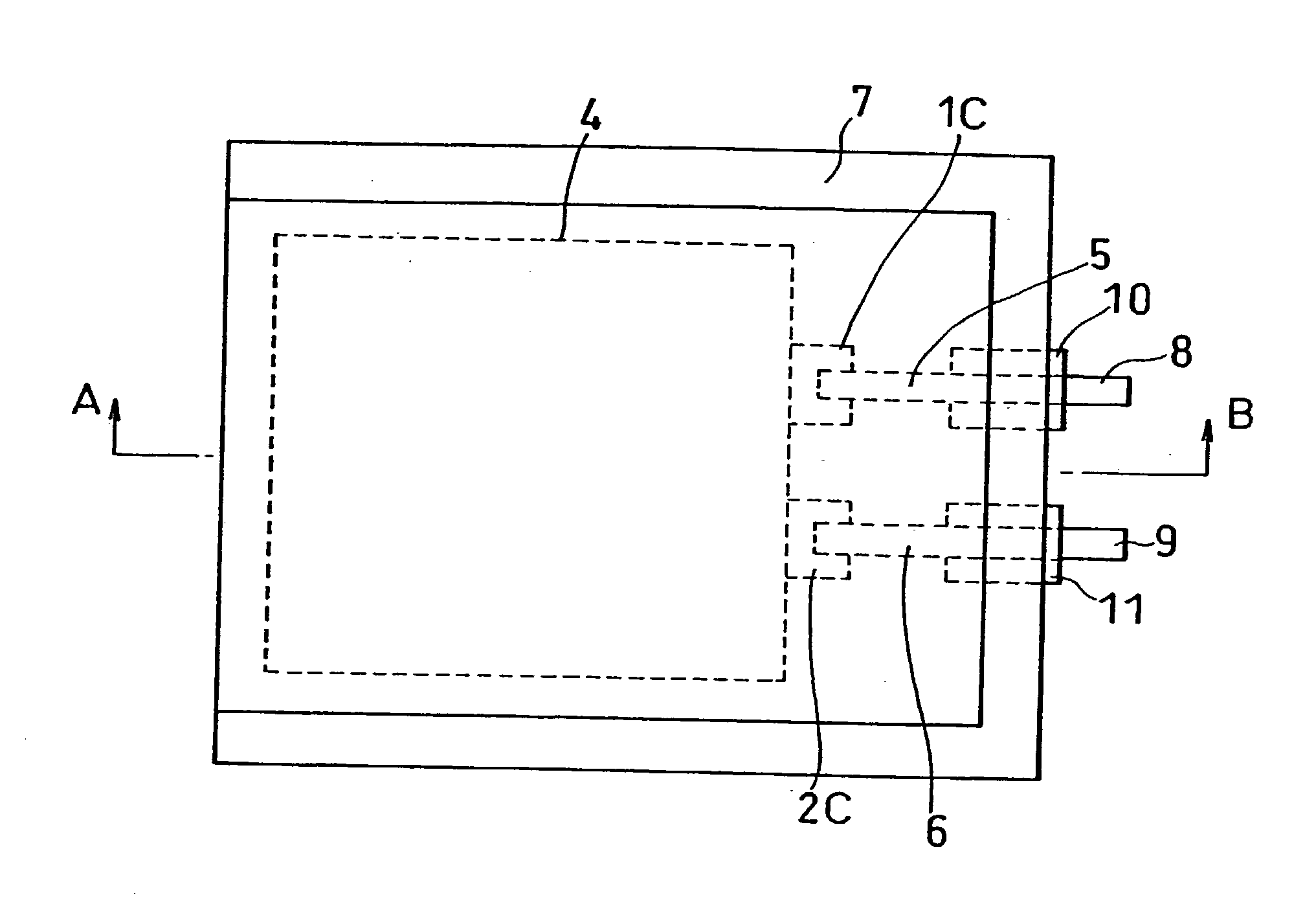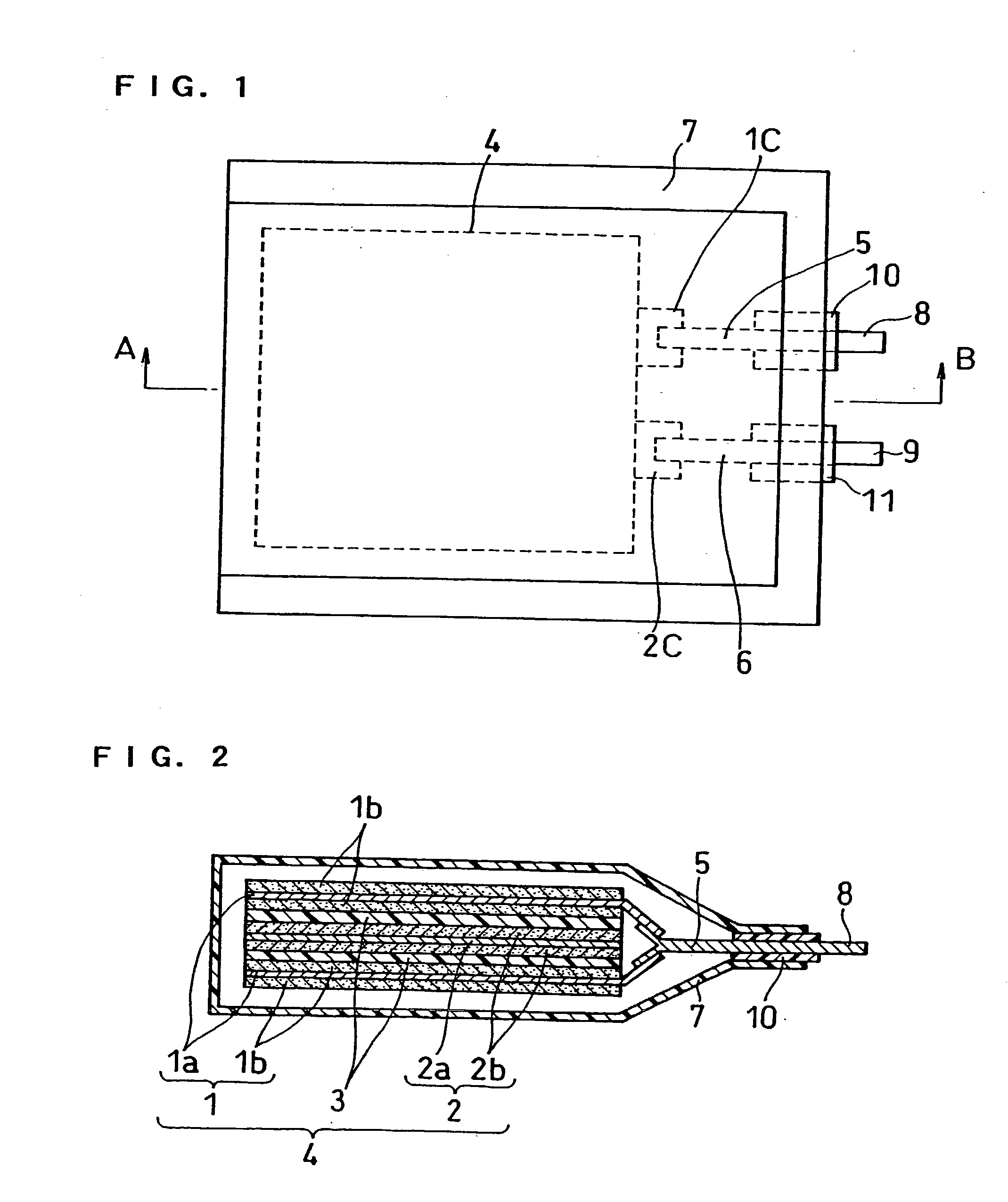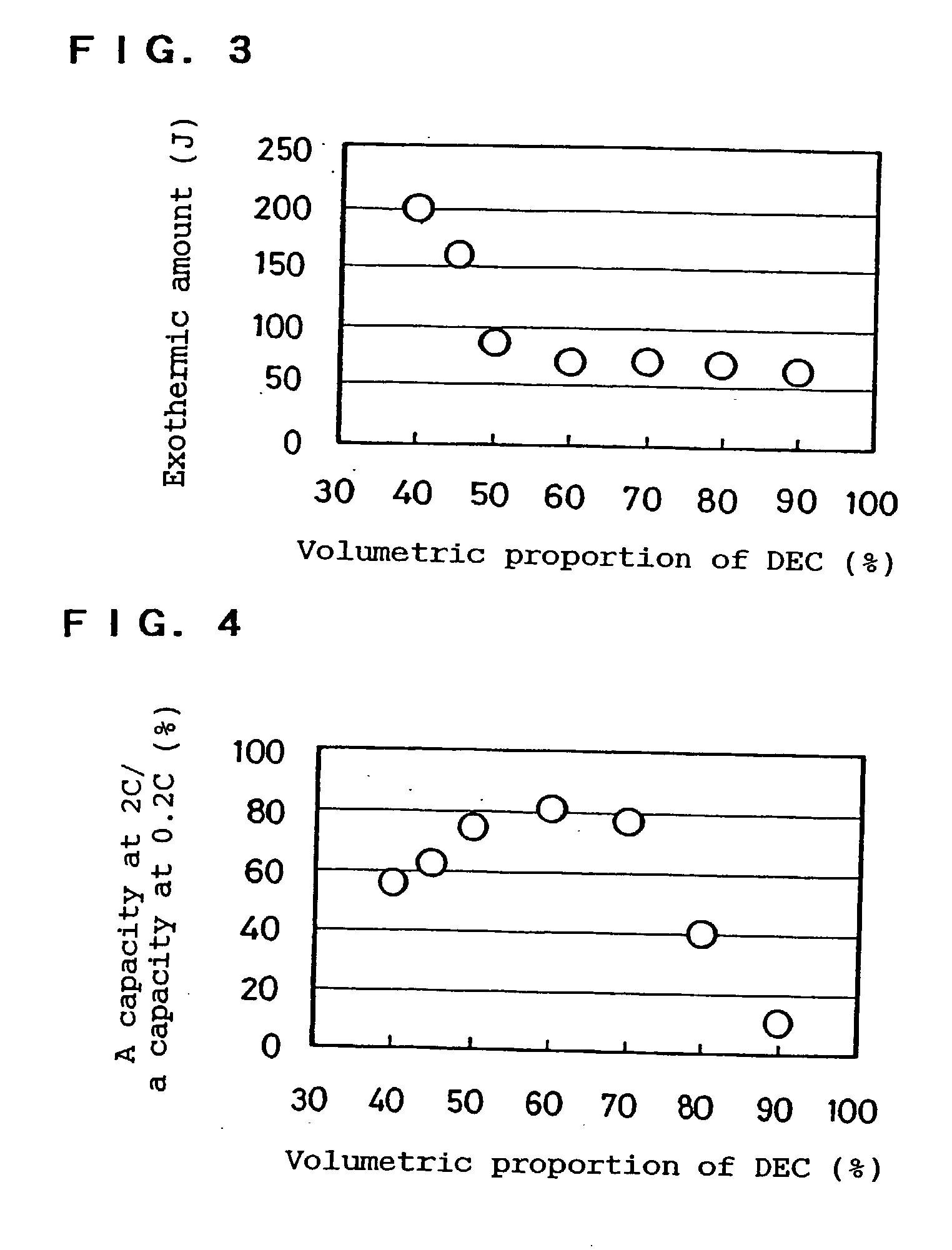Lithium polymer cell
a polymer cell and polymer technology, applied in the field of lithium polymer batteries, can solve the problems of abnormal battery temperature rise, battery energy density decline, and overcharged battery state thermal instability, and achieve the effect of promoting the softening of p(vdf-hfp)
- Summary
- Abstract
- Description
- Claims
- Application Information
AI Technical Summary
Benefits of technology
Problems solved by technology
Method used
Image
Examples
example 2
[0059] LiPF.sub.6 was dissolved at 1.25 mol / l in each mixture solvent of EC, PC and / or DEC having a composition shown in Table 2 to prepare 5 types of electrolytes. Further, DPE as an additive was respectively mixed in each electrolyte so that the amount of DPE was 4% by weight of the electrolyte in total. The batteries "h" to "1" were produced by using these electrolytes.
2 TABLE 2 Solvent composition Exothermic (vol. %) amount Battery EC DEC PC Additive (J) h 50 0 50 DPE 320 i 50 20 30 290 j 50 25 25 130 k 50 30 20 115 l 50 50 0 85
PUM
| Property | Measurement | Unit |
|---|---|---|
| temperature | aaaaa | aaaaa |
| temperature | aaaaa | aaaaa |
| temperature | aaaaa | aaaaa |
Abstract
Description
Claims
Application Information
 Login to View More
Login to View More - R&D
- Intellectual Property
- Life Sciences
- Materials
- Tech Scout
- Unparalleled Data Quality
- Higher Quality Content
- 60% Fewer Hallucinations
Browse by: Latest US Patents, China's latest patents, Technical Efficacy Thesaurus, Application Domain, Technology Topic, Popular Technical Reports.
© 2025 PatSnap. All rights reserved.Legal|Privacy policy|Modern Slavery Act Transparency Statement|Sitemap|About US| Contact US: help@patsnap.com



